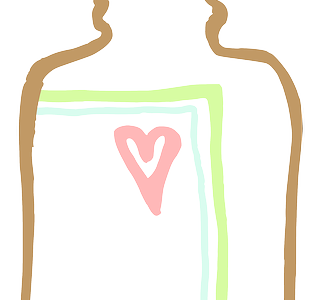The labelling is one of the most important features of the product when it comes to sales, but at the same time a correct labelling is essential for the compliance of the cosmetic product with the Cosmetics Regulation 1223/2009/EC.
Article 19, Cosmetics Regulation 1223/2009/EC
describes the cosmetic labelling requirements and rules to be followed. Below, we detail the information that must appear on the label of a cosmetic product.
- NAME AND ADDRESS OF THE RESPONSIBLE PERSON: this information must appear on the primary (bottle) and secondary (box) packaging. If more than one name and address are indicated on the packaging, the name and address of the EU Responsible Person should be underlined.
- COUNTRY OF ORIGIN: when a product is imported from a country outside the European Union, the country of origin shall be indicated on the packaging by the phrase “Made in + Name of Country”.
- NOMINAL CONTENT: quantity of the product at the time of packaging expressed in weight (mg, g, kg) or volume (ml, l). It is important to keep in mind that it is not mandatory to indicate the nominal content in the following cases:
- Free samples
- Monodose
- Containers of less than 5 g or 5 ml
- EXPIRATION DATE OR PERIOD AFTER OPENING (PAO):
Depending on the results of the stability testing, the Challenge testing and factors relating to the use of the product, the safety assessor may decide whether the product has to indicate an expiration date or whether it is sufficient to indicate the PAO. The Expiration Date can be expressed by the symbol + the expiration date (mm/yyyy) or with the phrase “Best before” + the expiration date (mm/yyyy).
The expiration date is not mandatory for products with a minimum shelf life of more than 30 months. In this case, the Period After Opening (PAO) can be declared. The symbol is used with the number of months inside or outside the same symbol.
It is NOT mandatory to indicate the PAO on products of low microbiological risk.
- PRECAUTIONS FOR USE AND WARNINGS: in some cosmetics it may be useful to indicate precautions for use and warnings. In some cases it is mandatory to indicate the warnings required by the Regulation, which are listed in Annexes III to VI column i).
- BATCH NUMBER: the finished product must be identified by a batch or reference number and must appear on both the primary and secondary packaging (if present).
- FUNCTION OF THE PRODUCT: the main function of the product shall be indicated unless its presentation makes it clear (e.g. lipstick, nail polish, soap, etc.).
- LIST OF INGREDIENTS: the list of ingredients must be preceded by the word “INGREDIENTS”. For space reasons, if the primary container is small, the list of ingredients may appear only on the secondary packaging.
Some rules must be observed when declaring ingredients on the label:
- Ingredients with a concentration above 1% must be declared in decreasing order of concentration.
- Ingredients with a concentration of less than 1% may be declared in any order after ingredients with a concentration of more than 1%.
- Colorants are declared after the other ingredients.
- Colorants are declared according to their CI (Colour Index) nomenclature.
- Perfumes and aromatic compounds are declared under the terms “PERFUME” or “AROMA”.
- Nanomaterials must be declared on the label followed by the word (NANO).
SYMBOLS
![]() The “hand in the book” symbol indicates that additional information is attached to a label or leaflet.
The “hand in the book” symbol indicates that additional information is attached to a label or leaflet.
![]() Indicates the expiration date of the cosmetic product if its shelf life is less than or equal to 30 months.
Indicates the expiration date of the cosmetic product if its shelf life is less than or equal to 30 months.
![]() Indicates the Period After Opening (PAO) of a cosmetic product in the case of a shelf life of more than 30 months.
Indicates the Period After Opening (PAO) of a cosmetic product in the case of a shelf life of more than 30 months.
![]() Indicates the control of the nominal content and is added to the label if the requirements of Directive 76/211/EEC are met.
Indicates the control of the nominal content and is added to the label if the requirements of Directive 76/211/EEC are met.
Products such as aerosols or flammable products must bear special declarations and symbols.
LANGUAGE OF THE LABELING
The function of the product, precautions for use and warnings, as well as the nominal content, must be translated into the official languages of the country in which the product is sold. Please note that Austria, Bulgaria, France, Poland, Portugal and Slovakia require a full translation of the label.
When it is not possible to print the mandatory information for practical reasons (e.g. not enough space because the product is too small) an enclosed leaflet can be used for specific information only. A leaflet is a tape, label or card attached or adhered. In this case, the information on the primary packaging and/or secondary packaging will be referred to by the “hand-in-book” symbol.
CLAIMS
Claims include all texts, images or symbols used by a trademark to present the characteristics of a cosmetic product. They are an advertising and communication tool for the consumer. However, manufacturers cannot always claim what they want, as cosmetic claims are regulated by Commission Regulation (EU) 655/2013 laying down common criteria to which claims relating to cosmetic products must conform.
The claims must conform to the definition of cosmetic product, which means that products presented as having curative or disease-preventive properties are not included. In this sense, words such as cure, treat, etc. should be avoided.
Among other requirements, claims must be objective and not denigrate any legally used ingredient. The most common example is the claim “paraben-free” which should be banned in Europe, as it denigrates the entire paraben family, within which there are legally used parabens.
All claims should contain information that enables the end user to make an informed choice and should be based on scientific evidence. They can be supported by consumer perception tests, in vivo tests, bibliographical research, properties of the ingredients that make up the product, in vitro tests, ex vivo tests, etc.
Now you can dowload our free e-book which helps to you to register cosmetics in EU in 4 key steps with a minimun effords.
Fill in the following form and you will have access to our free eBook:


